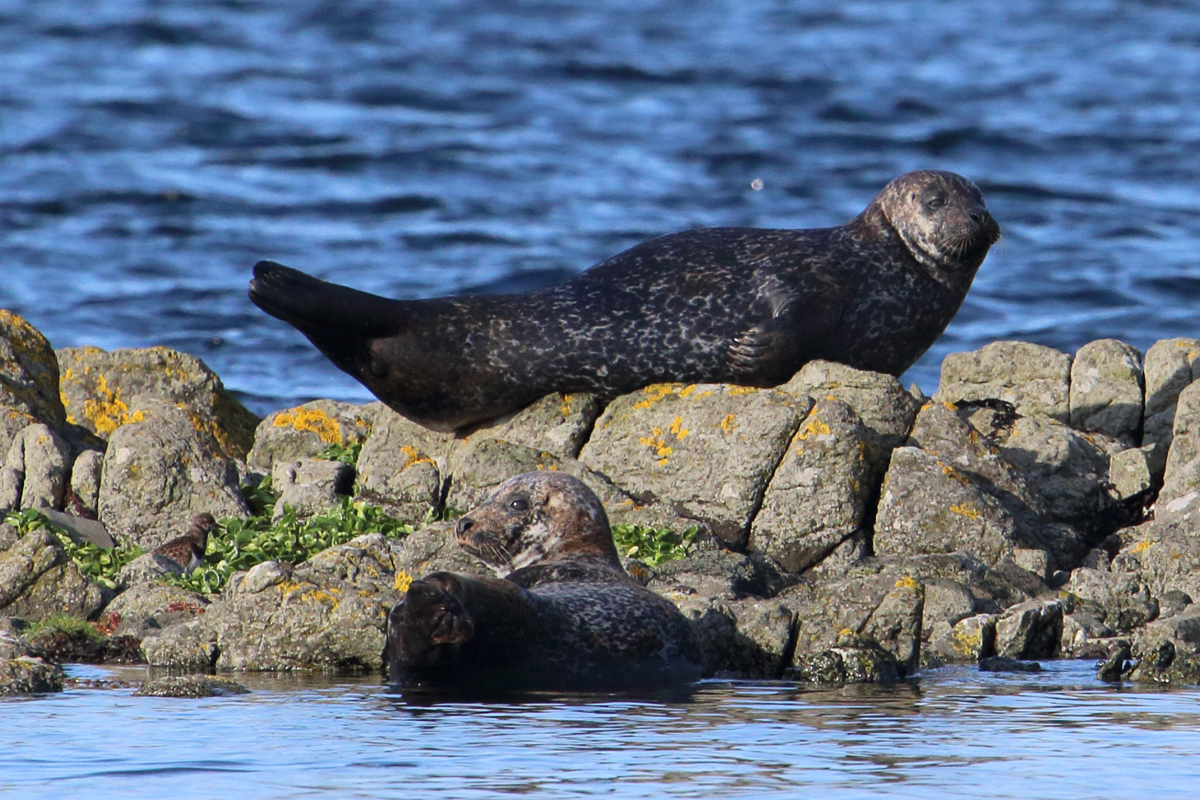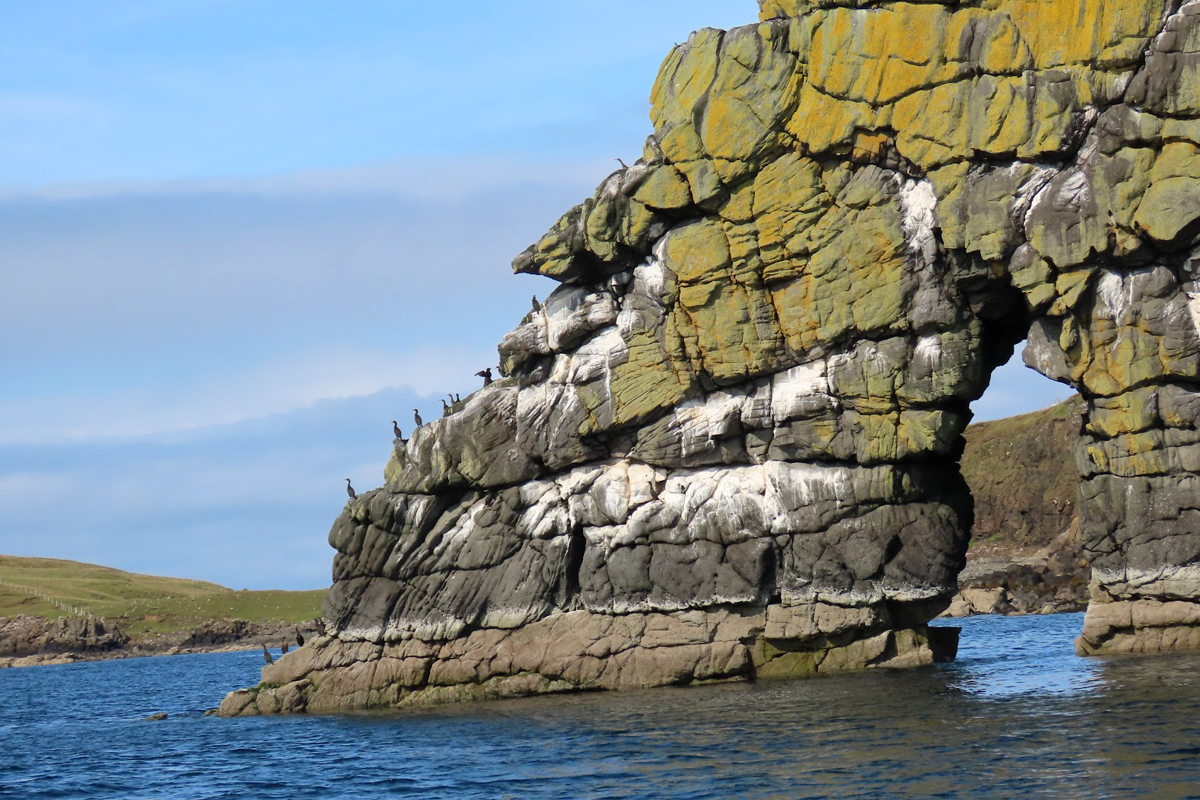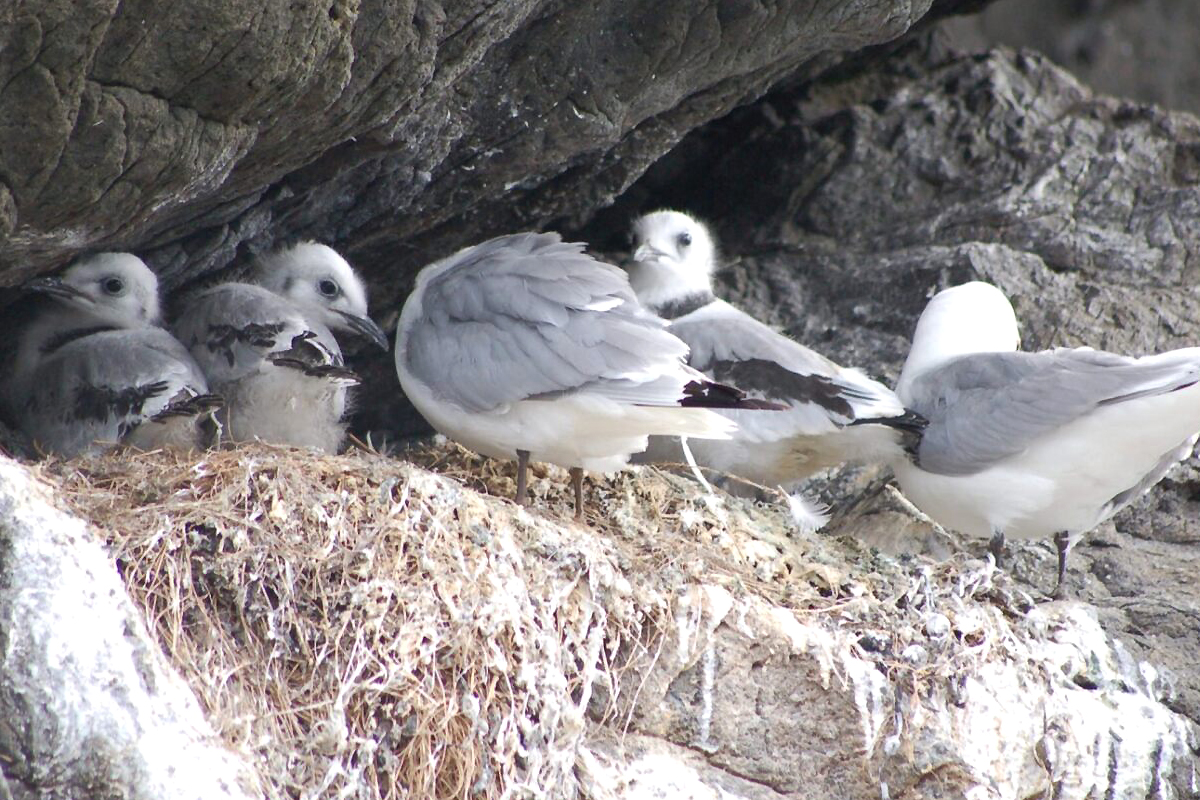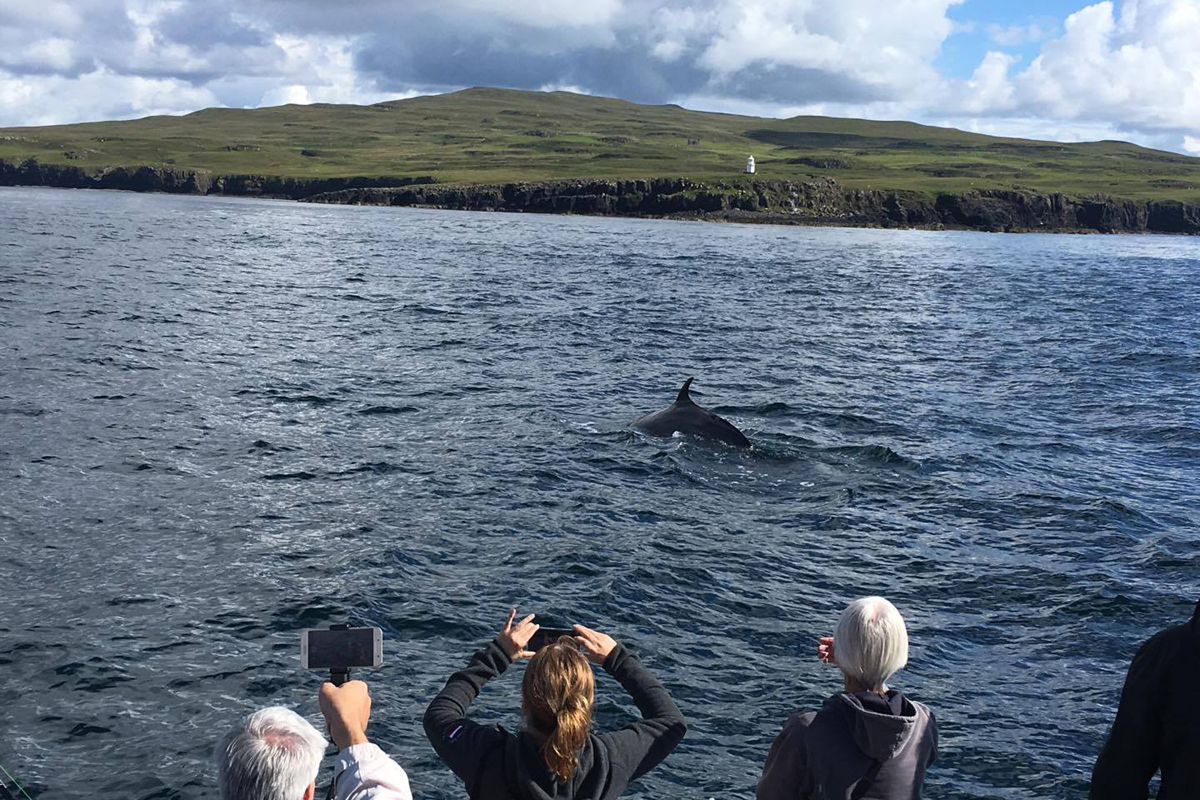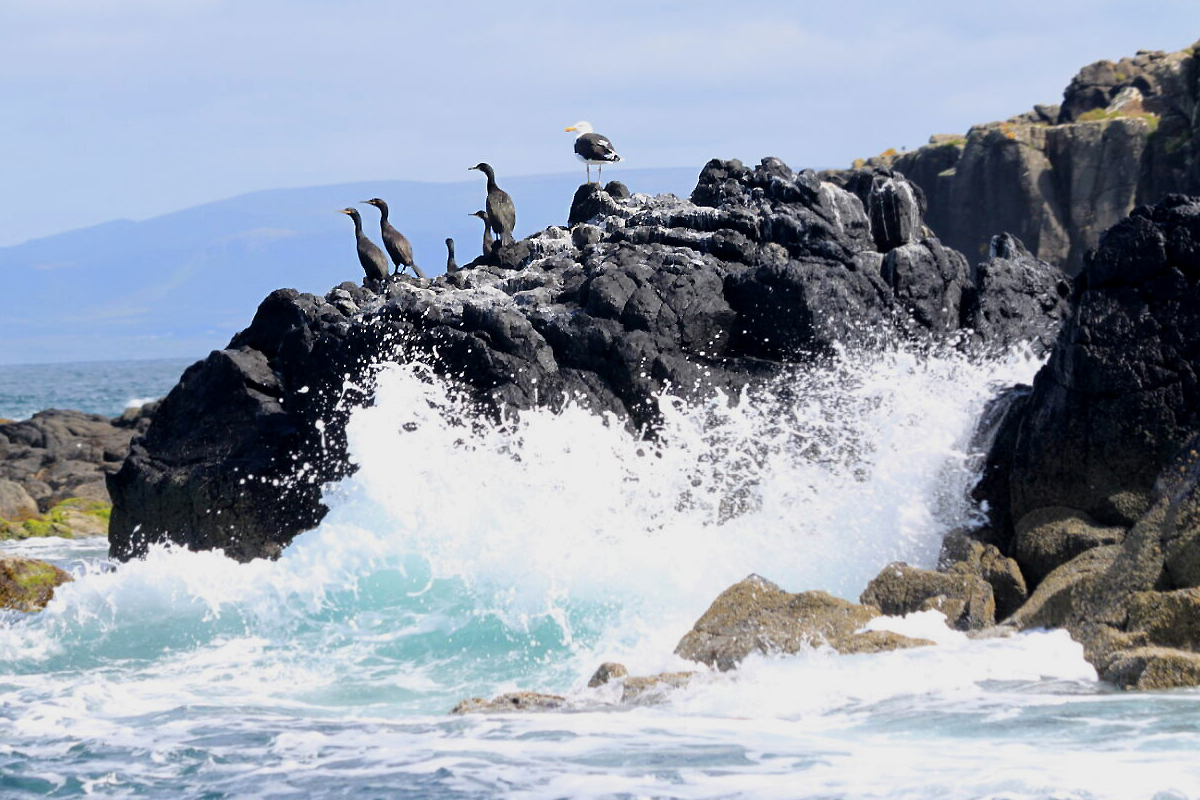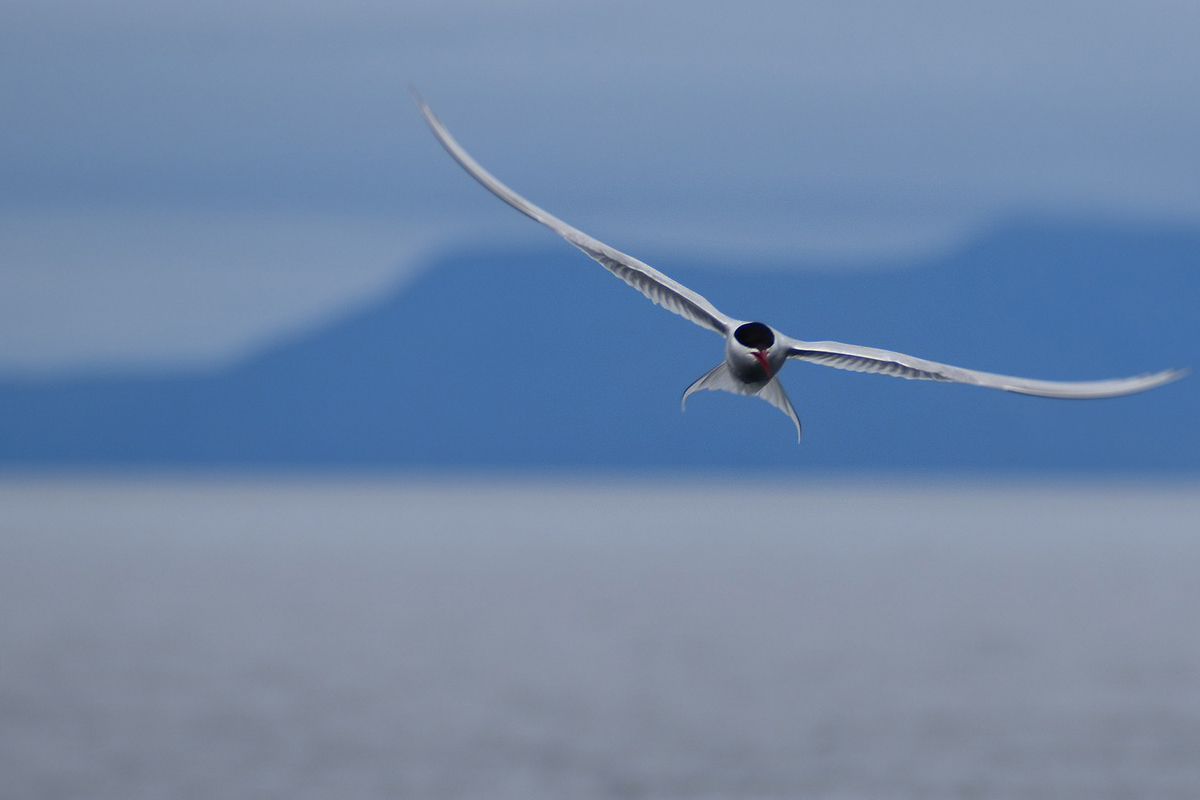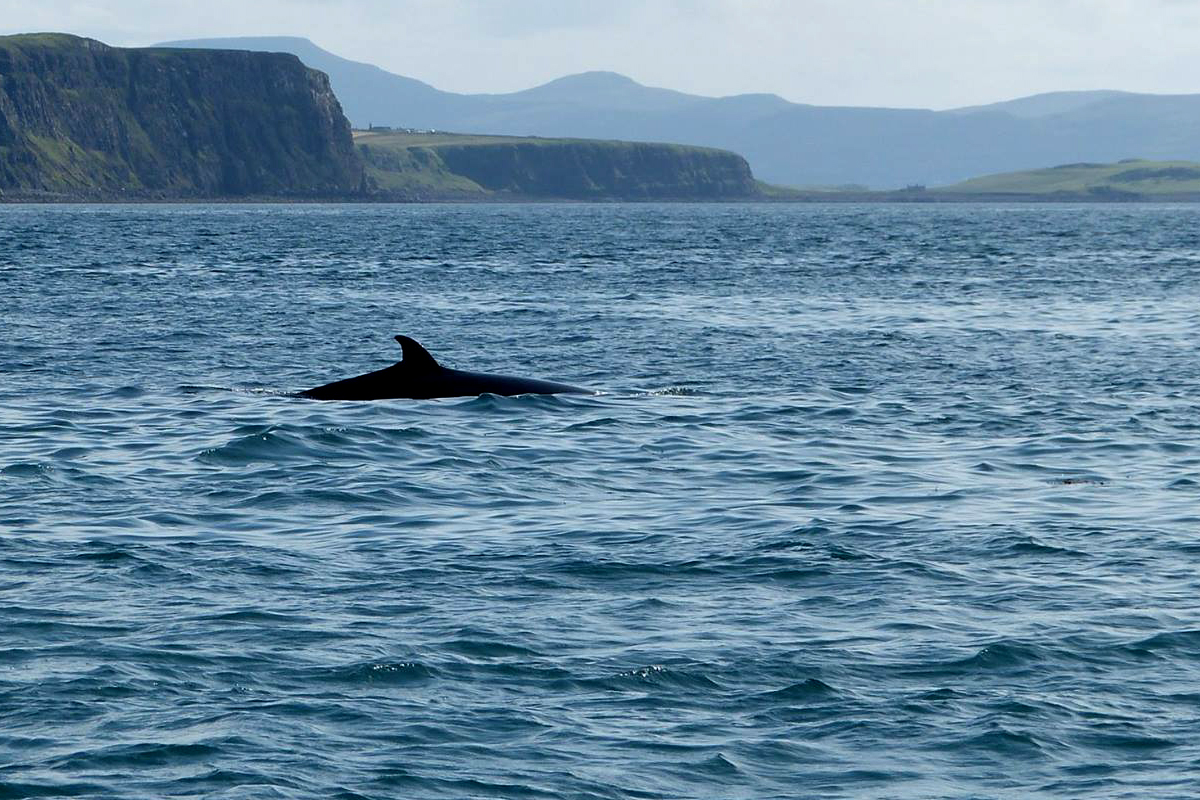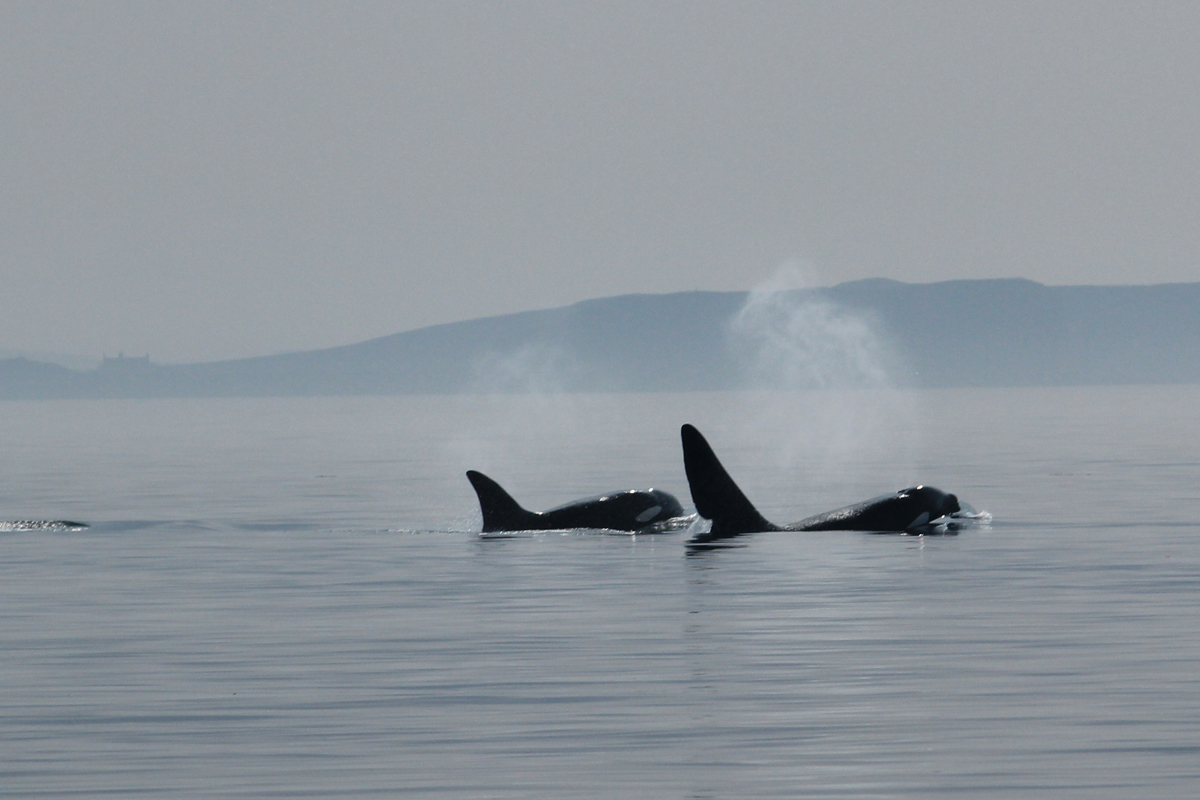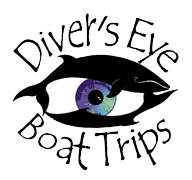
WILDLIFE BOAT TRIP – WATERNISH PT
WILDLIFE BOAT TRIP – WATERNISH PT
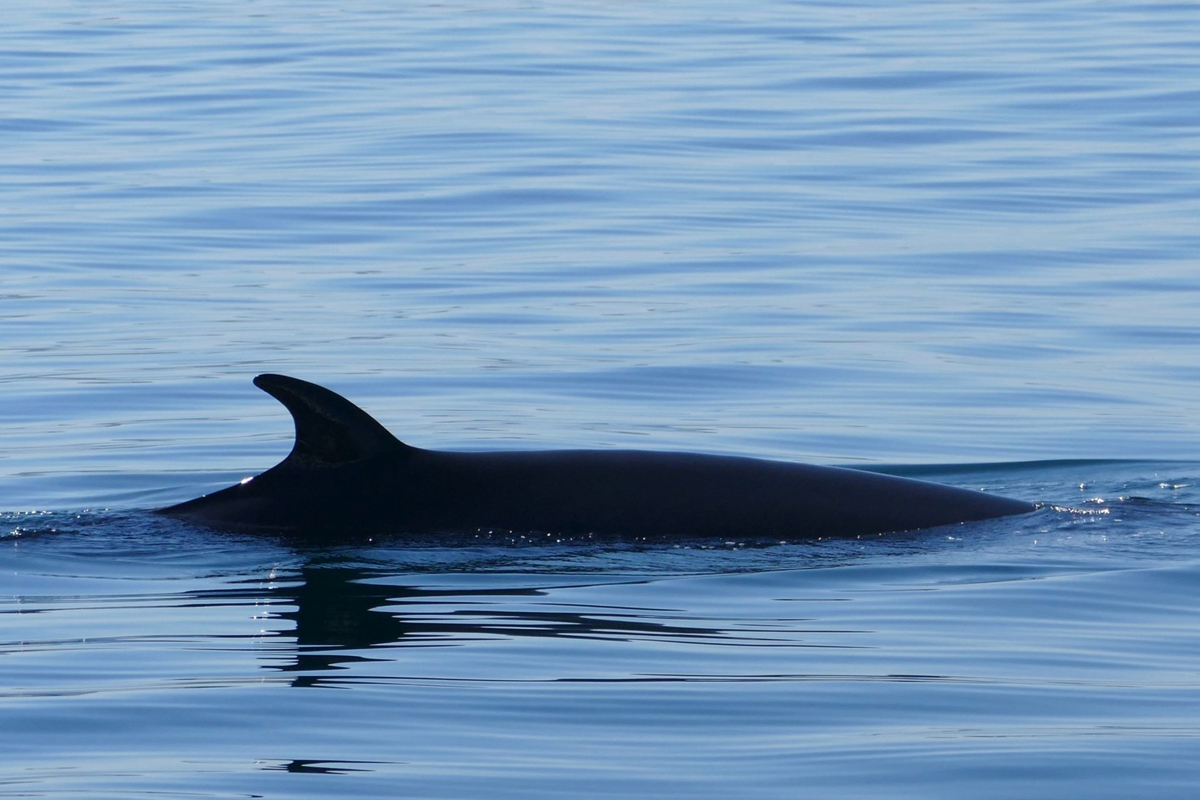
DURATION: 3.5/4 hrs | COST: £55 per person
CLICK ANY IMAGE TO OPEN SLIDESHOW
ABOUT THIS TRIP
An extended version of Lochbay Seals, Seabirds and Heritage, this trip ventures into deeper coastal waters where encounters with porpoise, whale, and dolphin become more likely with occasional sightings of Orca and basking shark possible too.
Departing from the iconic and historic fishing village of Stein, this trip sails across Lochbay to the hillside where the rocky crags provide excellent habitat for red deer and are favoured nesting sites for golden eagle and sea eagles. The lower slopes extend down over small cliffs to a rocky foreshore, through a tumble of native woodland, wild garlic and honeysuckle, to reach perfect fishing ground for otter, which we spot very occasionally by boat.
Lochbay Islands are part of a Special Area of Conservation for common seals, and around the shores there are numerous haul-out sites, which they use for different purposes throughout the year. Common seals have their pups in early June and through the summer months we enjoy seeing them grow up. In the early weeks mum and her pups are often hauled out on rocky skerries suckling for rapid growth as they soak up the heat of the sun. The pups swim from birth and can be seen enjoying a ‘piggyback ride’ from Mum as they learn new swimming and fishing skills. Like all young they have less inhibition and are curious, so often approach the boat for a closer look at you.
We cruise on into deeper water outside Lochbay Islands, viewing the seabird nesting colonies of gulls, ducks, geese and more, as we head onto Ardmore Arches at the outer extremity of Lochbay. On the way we can encounter porpoise and dolphin as they pass through these deep-water feeding grounds. Ardmore Arches is an intriguing rocky structure, one that is home to nesting guillemot, razorbill, cormorant and shag, and of which we enjoy good views. From here, the birds can easily reach shallow reefs and deeper water for a choice of food to sustain their chicks.
Cruising on into deeper coastal waters we head out to sea towards Waternish Pt. On the way we visit colonies of seabirds including kittiwake and razor bills with nests ‘glued to’ impossibly narrow ledges, and their eggs clenched tightly between webbed feet. Often sea eagles soar above plummeting sea-cliffs on the up current from the cliffs or come down passed rainbows in waterfalls, to sea level and to fish. Early in the season we may encounter puffin before they go ashore to their breeding colony.
As we reach the deep tidal uprisings farther out into the Hebridean Minch this is where whale, porpoise, and dolphin are most often seen. Diving gannets plummeting to feast is a good indicator of fish and likely sightings of gentle giants. In early season cetaceans are transitory until ‘becoming established’ when we enjoy them with impressive regularity. As a WiSE accredited operator, we behave in a manner that allows them to interact with us if they choose, or to carry on feeding uninterrupted. Individual mammals behave differently, some being cautious others being curious and coming close to ‘eyeball’ you. Every and any encounter is a privilege and the mammal’s welfare is always paramount. Most likely species encountered are minke whales, sometimes pilot whales, white sided dolphins, common dolphins, bottlenose dolphins and Rissos dolphins. In recent years Humpback whale sightings have recovered though they are still uncommon for us at this time.
Orca encounters with their large distinctive fins heralding their arrival, are occasional but always memorable, leaving a frisson of excitement in the air and much chatter lasting long into the day. By comparison basking shark move lazily as they feed, scooping up gallons of plankton soup in their massive mouths but these encounters are much less frequent and therefor extra special.
The turning point of the trip, we head back along the deep-water contours ever watchful for more sightings. Panoramic seascapes can be enjoyed throughout with the Outer Hebrides Archipelago to the north and west, Dunvegan Head to the southwest and the distinctive MacLeod’s Tables and The Cuillin Mountains to the south.
As we approach Lochbay we weave through the islands, now perceived as remote by many, but, which were once the centre of the maritime super-highway. They enjoy a rich and vibrant heritage and were occupied by Vikings and Highland Clans folk until the early 1900’s. You will see the remains of the fishing station settlement, ‘the big house’ and other small industrial structures from the Victorion era. There are stories of clan rivalry, succession struggles and ‘Game of Thrones’ style murder to hear. For those who become intrigued by the islands, or who have ancestral connections, we offer 2 trips ‘Go Ashore & Explore – Isay Island’ and Isay Island Castaway Day.
If you hope to see puffin, then the longer trip ‘Wildlife Puffin’, an extension of this trip, might suit you better.
When we return to Stein, if you wish to explore more, we suggest you check out Visit Waternish website.
WHEN TO ARRIVE | WHERE TO MEET | WHAT TO BRING
Detailed instructions will be sent with your tickets. You may find our FAQ’s useful.
WILDLIFE BOAT TRIP
WATERNISH PT

DURATION: 3.5/4 hrs | COST: £55 per person
CLICK ANY IMAGE TO OPEN SLIDESHOW
ABOUT THIS TRIP
An extended version of Lochbay Seals, Seabirds and Heritage, this trip ventures into deeper coastal waters where encounters with porpoise, whale, and dolphin become more likely with occasional sightings of Orca and basking shark possible too.
Departing from the iconic and historic fishing village of Stein, this trip sails across Lochbay to the hillside where the rocky crags provide excellent habitat for red deer and are favoured nesting sites for golden eagle and sea eagles. The lower slopes extend down over small cliffs to a rocky foreshore, through a tumble of native woodland, wild garlic and honeysuckle, to reach perfect fishing ground for otter, which we spot very occasionally by boat.
Lochbay Islands are part of a Special Area of Conservation for common seals, and around the shores there are numerous haul-out sites, which they use for different purposes throughout the year. Common seals have their pups in early June and through the summer months we enjoy seeing them grow up. In the early weeks mum and her pups are often hauled out on rocky skerries suckling for rapid growth as they soak up the heat of the sun. The pups swim from birth and can be seen enjoying a ‘piggyback ride’ from Mum as they learn new swimming and fishing skills. Like all young they have less inhibition and are curious, so often approach the boat for a closer look at you.
We cruise on into deeper water outside Lochbay Islands, viewing the seabird nesting colonies of gulls, ducks, geese and more, as we head onto Ardmore Arches at the outer extremity of Lochbay. On the way we can encounter porpoise and dolphin as they pass through these deep-water feeding grounds. Ardmore Arches is an intriguing rocky structure, one that is home to nesting guillemot, razorbill, cormorant and shag, and of which we enjoy good views. From here, the birds can easily reach shallow reefs and deeper water for a choice of food to sustain their chicks.
Cruising on into deeper coastal waters we head out to sea towards Waternish Pt. On the way we visit colonies of seabirds including kittiwake and razor bills with nests ‘glued to’ impossibly narrow ledges, and their eggs clenched tightly between webbed feet. Often sea eagles soar above plummeting sea-cliffs on the up current from the cliffs or come down passed rainbows in waterfalls, to sea level and to fish. Early in the season we may encounter puffin before they go ashore to their breeding colony.
As we reach the deep tidal uprisings farther out into the Hebridean Minch this is where whale, porpoise, and dolphin are most often seen. Diving gannets plummeting to feast is a good indicator of fish and likely sightings of gentle giants. In early season cetaceans are transitory until ‘becoming established’ when we enjoy them with impressive regularity. As a WiSE accredited operator, we behave in a manner that allows them to interact with us if they choose, or to carry on feeding uninterrupted. Individual mammals behave differently, some being cautious others being curious and coming close to ‘eyeball’ you. Every and any encounter is a privilege and the mammal’s welfare is always paramount. Most likely species encountered are minke whales, sometimes pilot whales, white sided dolphins, common dolphins, bottlenose dolphins and Rissos dolphins. In recent years Humpback whale sightings have recovered though they are still uncommon for us at this time.
Orca encounters with their large distinctive fins heralding their arrival, are occasional but always memorable, leaving a frisson of excitement in the air and much chatter lasting long into the day. By comparison basking shark move lazily as they feed, scooping up gallons of plankton soup in their massive mouths but these encounters are much less frequent and therefor extra special.
The turning point of the trip, we head back along the deep-water contours ever watchful for more sightings. Panoramic seascapes can be enjoyed throughout with the Outer Hebrides Archipelago to the north and west, Dunvegan Head to the southwest and the distinctive MacLeod’s Tables and The Cuillin Mountains to the south.
As we approach Lochbay we weave through the islands, now perceived as remote by many, but, which were once the centre of the maritime super-highway. They enjoy a rich and vibrant heritage and were occupied by Vikings and Highland Clans folk until the early 1900’s. You will see the remains of the fishing station settlement, ‘the big house’ and other small industrial structures from the Victorion era. There are stories of clan rivalry, succession struggles and ‘Game of Thrones’ style murder to hear. For those who become intrigued by the islands, or who have ancestral connections, we offer 2 trips ‘Go Ashore & Explore – Isay Island’ and Isay Island Castaway Day.
If you hope to see puffin, then the longer trip ‘Wildlife Puffin’, an extension of this trip, might suit you better.
When we return to Stein, if you wish to explore more, we suggest you check out Visit Waternish website.
WHEN TO ARRIVE | WHERE TO MEET | WHAT TO BRING
Detailed instructions will be sent with your tickets. You may find our FAQ’s useful.
